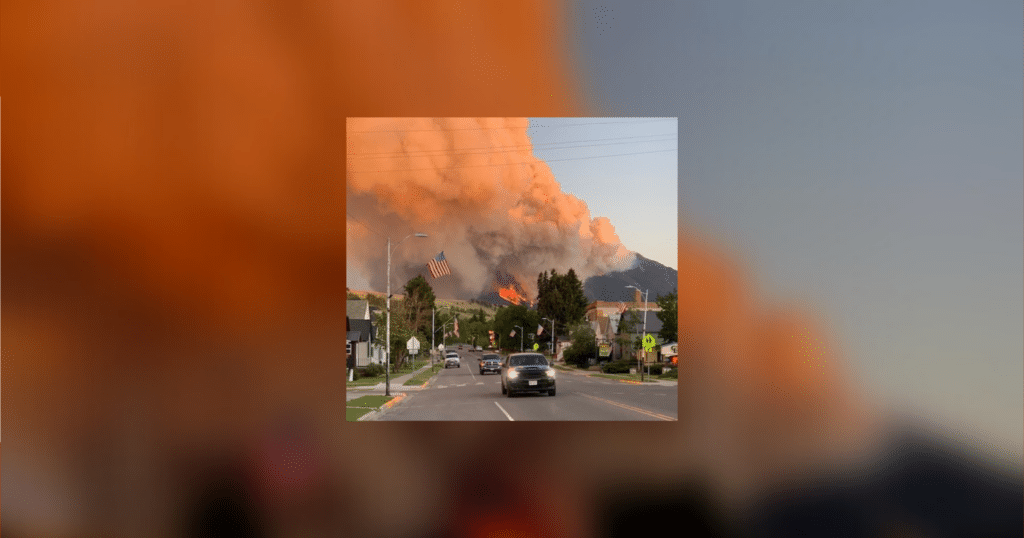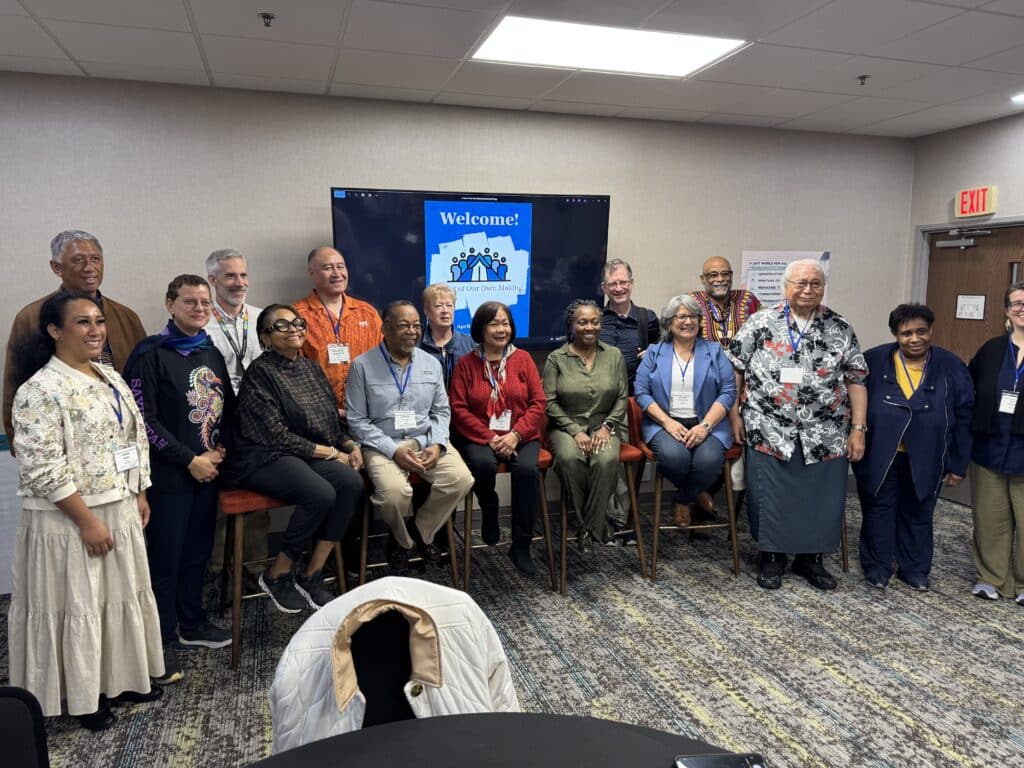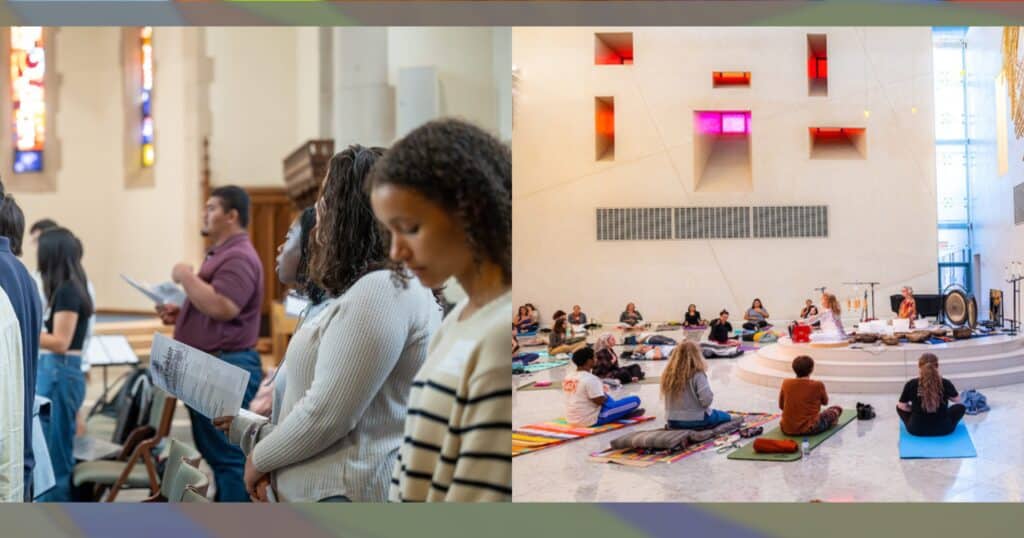Local church’s plan and UCC grant help Montana town respond to wildfire
The Rev. Pam Peterson walked out of her church this summer and saw a mountain on fire.
She had a plan for that.
It’s something all congregations should have, UCC officials say. Whether the disaster involves fire, flood, ice, wind, earthquake or something else, preparation matters.
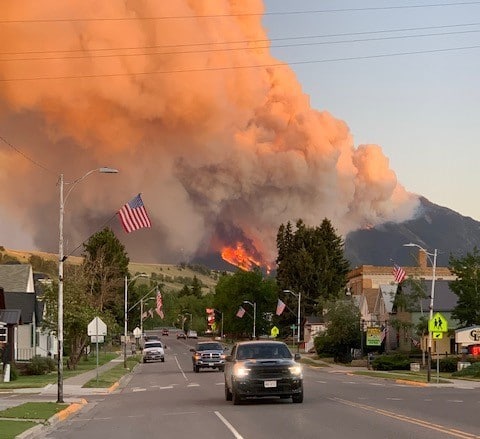
“If COVID-19 has taught us all individually and collectively anything it is that we must be ready for all hazards and emergencies,” said Lesli Remaly. As the disaster specialist on the UCC’s Global H.O.P.E. team, she can help churches get started.
And as heat, drought and fires threaten to become a new kind of normal in the western U.S., Peterson’s Montana congregation is just one example of how planning can pay off — and how Disaster Ministries grants can help when emergencies strike.
Written for a seminary class
The smoke rising from nearby Mt. Maurice on June 15 wasn’t a total surprise to the people of Red Lodge Community Church, UCC. The Robertson Draw fire in the Beartooth Mountains had started two days earlier, just over the Wyoming border. High winds fanned and moved it, aided by dry, 95-degree weather. Now it was just five miles south of Red Lodge, population 2,000.
Fortunately, Peterson had in hand a “house of worship disaster plan.” She had received training from the National Disaster Interfaiths Network in her past work as a hospital trauma chaplain in Connecticut.
Arriving in Montana three years ago, she put that training to work. As a project for one of her distance-learning D.Min. classes at Hartford Seminary, she developed a localized plan for Red Lodge. It spelled out the role religious congregations would play in responding to area disasters. It fit well with her doctoral emphasis on wilderness and eco-spirituality.
List is activated
But it was more than an academic exercise. She had involved local fire and police officials — as well as local pastors — in her planning. When Mt. Maurice went up in flames, she got the green light. “The fire service person called me right away – he had helped me develop the plan – and told me to implement it,” she said.
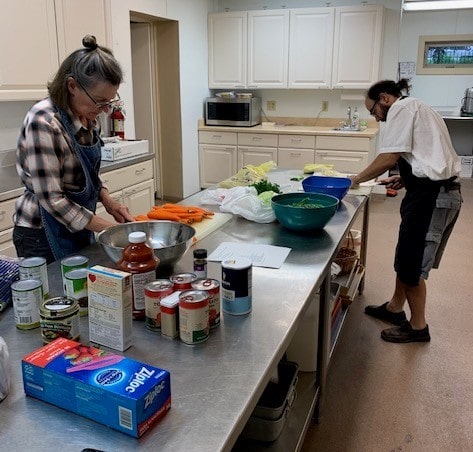
That meant alerting a list of 15 faith communities that had signed up to feed, house or otherwise help disaster victims. “They’re of almost every denomination you can think of, but they don’t necessarily have a building,” Peterson said.
Red Lodge Community Church opened as an evacuation center for mountain residents who might have to flee the fire. In addition, if needed, members of that congregation alone “could easily sleep 50 people” in their homes as well, she said.
Recovery continues
As it happened, only one evacuated couple — and their pet — needed temporary housing from the church list. “The Red Cross also had an evacuation set up at our civic center, but they couldn’t house pets,” Peterson said.
But then came the recovery phase. The 30,000-acre fire destroyed homes, cabins and outbuildings in the region. Red Lodge is now home base for “workers coming in from all over the country” to help rebuild, Peterson said. That’s what’s keeping the faith groups on her list busy now.
“Some churches can’t house people, but they do have people who can cook or transport people,” she said. A storefront church, for example, is providing bottled water. Volunteers are preparing meals for the workers in Red Lodge Community Church’s kitchen.
Grant: food, tools, shower
Aiding the effort is a $3,000 “solidarity grant” from UCC Disaster Ministries, via the Montana-Northern Wyoming Conference. Peterson said it’s being used in three ways:

- Feeding the visiting recovery workers.
- Creating a permanent tool-lending bank, housed in the church’s shed. “The tools are being used for this recovery project, but will also be available for other disasters,” she said.
- “Deperately needed” updates to the church’s shower, for whenever the building again needs to become an evacuation center.
Indeed, the town’s mayor told the Billings Gazette that the Robertson’s Draw fire may have just been a trial run for the church, the Red Cross and others. Lots of tinder-dry “deadfall” still lies in surrounding forests.
Not only that, Peterson noted that the next disaster, in Red Lodge or anywhere else, might not be a fire. It could be “a hazmat leak or a hail storm.” Churches need to be ready.
How to get ready
That, Remaly said, is where Global H.O.P.E. and disaster coordinators across the UCC can help.
“Disaster Ministries is here to help you think now about what you and your congregation will need to be ready if a disaster strikes,” she said. “Your Conference Disaster Coordinator is seeking to partner with churches willing to help your neighbors and learn how you will offer that support.”
Remaly encouraged people to consult this list of disaster coordinators. She also urged them to use this preparedness manual, “a terrific resource for churches,” developed jointly with Insurance Board. All of them, she said, are available with advice and support. “Let us know you are ready and willing today.”
Related News
Unity Not Uniformity
The United Church of Christ is diverse. This is not an aspirational statement, instead it...
Read MoreUCC leaders, partners gather to vision for a more inclusive version of the church
No two United Church of Christ congregations are alike, and not all UCC congregations identify...
Read MoreGrowing faith: How three campus chaplains are attending to the sacred work of meeting student needs
When the Rev. Quinn Caldwell leads communion during a weekly worship service for students at...
Read More
